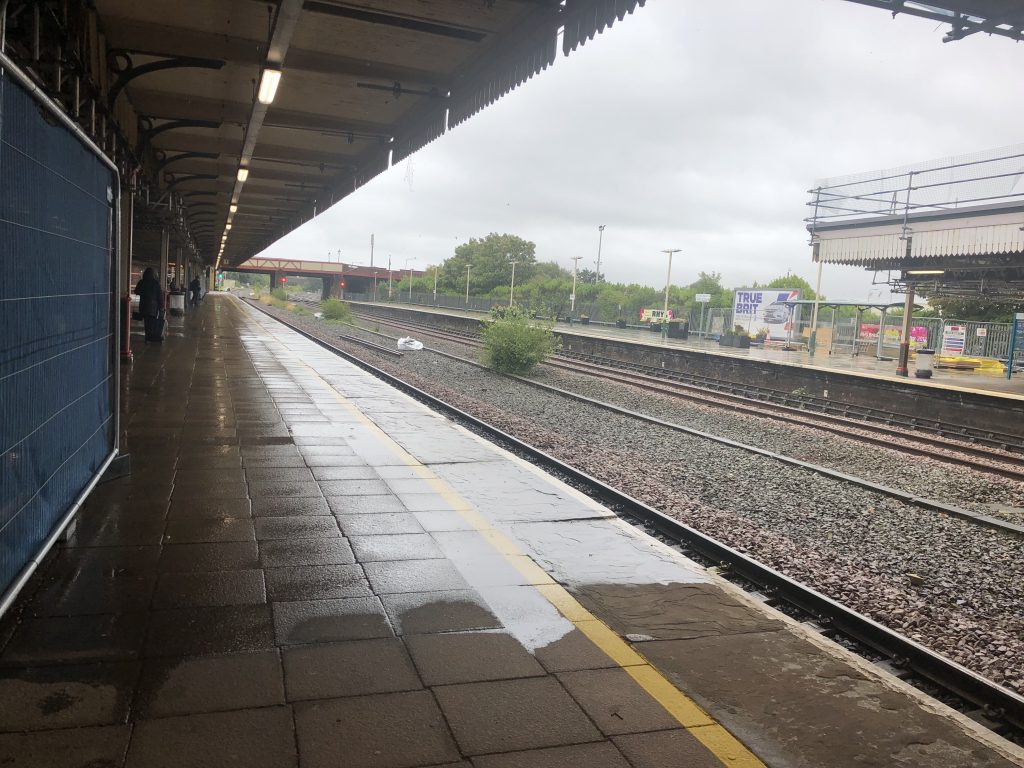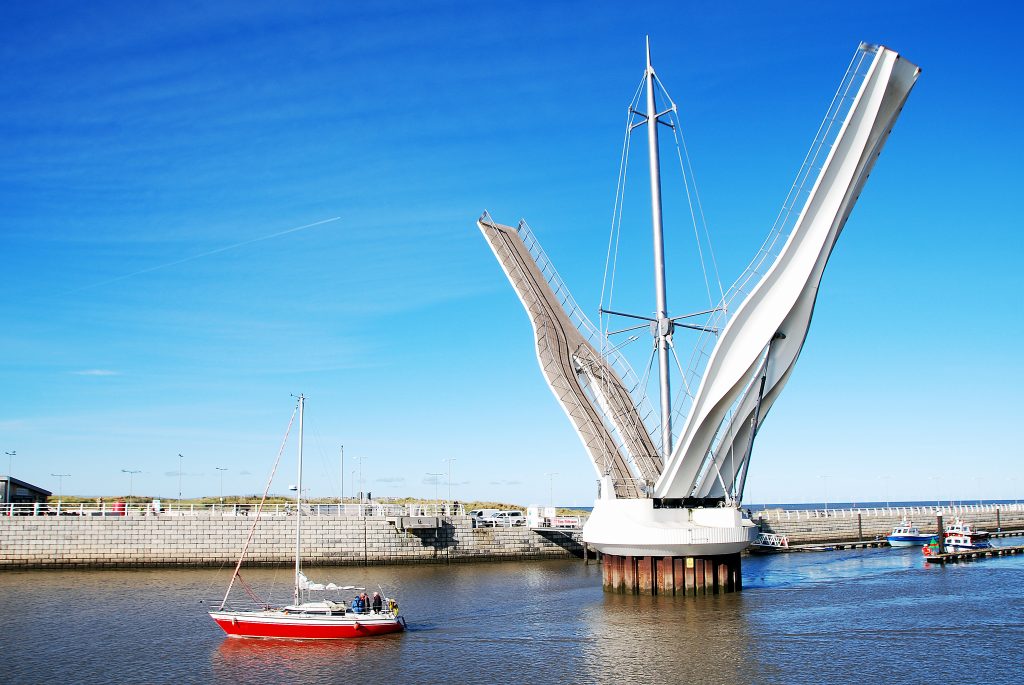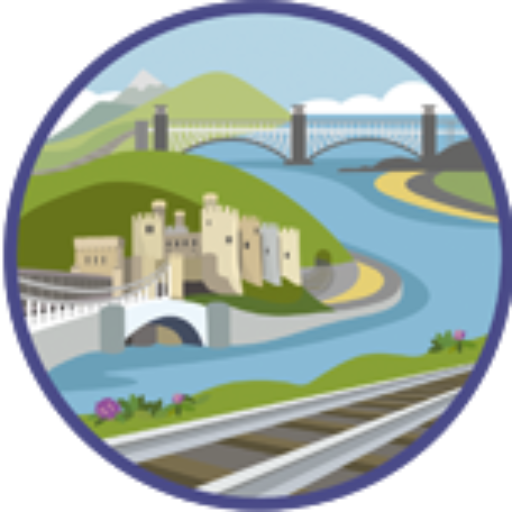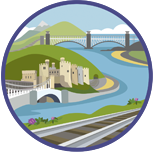
Rhyl’s long sandy beach meant that it was the first of the North Wales coastal towns to develop as a resort – two hotels were built here in the 1820s, and tourism in the town was boosted by the arrival of the railway in 1848. The town developed rapidly, and many of the resulting buildings are now Listed Buildings, including the Railway Station, Town Hall, chapels, the Royal Alexandra Hospital, and numerous houses. The impressive neo-gothic parish church of St Thomas was designed by renowned Victorian architect George Gilbert Scott and is listed Grade 2*. The red bricks used to build many of the town’s Victorian and early 20th Century buildings were made locally.
Rhyl Harbour, at the mouth of the River Clwyd, has been redeveloped and a pedestrian/cycle bridge crosses it, connecting up the North Wales cycle path. This bridge lifts to allow vessels to pass. The marine lake provides opportunities for sailing, canoeing, kayaking and sailboarding, or you can ride on the adjacent miniature railway, the oldest in the UK, or visit the outdoor arena on the promenade. Another popular attraction is the modern SC2 water park, with good range of facilities for all ages to enjoy.

The present Pavilion Theatre is the third to bear that name, and hosts a wide range of performances throughout the year. The Sky Tower operated at the Glasgow Garden Festival in 1993 and was moved to Rhyl, but was decommissioned in 2010 because of safety concerns. It is now a beacon.
Out at sea there are a number of shipwreck and wrecked aircraft sites. One of these is ‘Resurgam’, a very early engine-powered submarine which sank off Rhyl in 1880. It is now a Protected Wreck.


